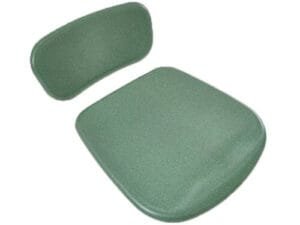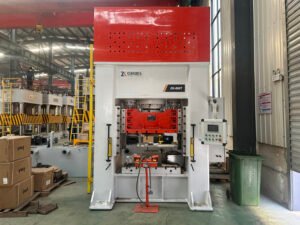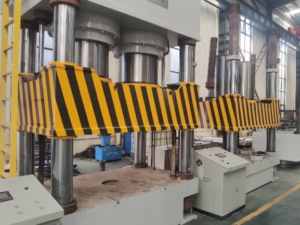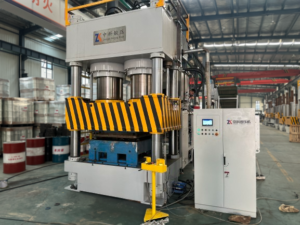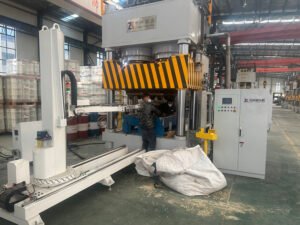Molded pallets have become an integral part of modern logistics and supply chains. They are known for their durability, lightweight structure, and environmental benefits. A crucial component in the production of molded pallets is the glue used to bind raw materials, such as recycled plastics or wood fibers. This article explores the types of glues used, their benefits, and their role in ensuring the quality and sustainability of molded pallets.
Watch our video on pallet production using advanced adhesives.
Why Glue Matters in Molded Pallet Production
Glues play a vital role in:
- Structural Integrity: Ensuring the materials bond together firmly for durability.
- Cost Efficiency: Reducing production costs by optimizing the amount of adhesive used.
- Sustainability: Enabling the use of recycled materials and eco-friendly production methods.
Types of Glues Commonly Used
- Phenol-formaldehyde (PF) Resin
- Features: High heat resistance, excellent durability, and water resistance.
- Applications: Frequently used in pallets exposed to outdoor conditions.
- Usage Proportion: Typically mixed at a ratio of 10-15% by weight of the raw material.
- Usage Method: Applied uniformly to fibers or particles before hot-pressing at high temperatures.
- Data: According to industry reports, PF resin accounts for over 60% of adhesives used in high-performance molded pallets.
- Urea-formaldehyde (UF) Resin
- Features: Cost-effective, quick curing, and strong bonding properties.
- Applications: Suitable for indoor-use pallets or those with lower moisture exposure.
- Usage Proportion: Typically used at 8-12% by weight of the raw material.
- Usage Method: Sprayed or mixed with raw material fibers before pressing.
- Data: UF resin is favored for its cost, being 30-40% cheaper than PF resins on average.
- Isocyanate-Based Adhesives (MDI)
- Features: Exceptional bonding strength, excellent water resistance, and reduced formaldehyde emissions.
- Applications: Commonly used for high-strength pallets and applications requiring superior environmental performance.
- Usage Proportion: Typically applied at 4-8% by weight due to its high bonding efficiency.
- Usage Method: Directly sprayed or injected into the raw material mix before pressing.
- Data: MDI-based adhesives can improve bond strength by up to 20% compared to traditional UF resins while offering lower VOC emissions.
- Melamine-Urea-Formaldehyde (MUF) Resin
- Features: A hybrid adhesive combining the cost-effectiveness of UF with the enhanced durability and water resistance of melamine.
- Applications: Ideal for pallets that require moderate outdoor exposure or improved load-bearing capacity.
- Usage Proportion: Generally used at 10-14% by weight.
- Usage Method: Mixed with raw materials and applied before hot pressing to ensure uniform bonding.
- Data: Studies show that MUF resins increase water resistance by 15-25% compared to standard UF resins.
- Eco-Friendly Biodegradable Adhesives
- Features: Made from natural polymers such as starch or lignin, reducing environmental impact.
- Applications: Increasingly popular in markets prioritizing sustainability.
- Usage Proportion: Applied at 12-18% by weight depending on the material composition.
- Usage Method: Mixed with raw materials under controlled temperatures to ensure proper bonding.
- Data: The global market for bio-based adhesives is projected to grow at a CAGR of 9.1% from 2023 to 2030.
For more insights, explore our comprehensive guide to presswood pallet machines.
Key Considerations When Choosing Glue
- Material Compatibility: The glue must bond effectively with the materials used, whether recycled plastics, wood fibers, or other composites.
- Environmental Regulations: Adhering to regulations such as low VOC (Volatile Organic Compounds) emissions.
- Production Efficiency: Fast curing times and ease of application can enhance production efficiency.
SEO Tips for Gluing Molded Pallet Together
To optimize your production process:
- Invest in adhesives with proven performance metrics.
- Collaborate with glue suppliers to customize formulations for your specific needs.
- Regularly evaluate glue performance using metrics such as shear strength and durability.
Conclusion
Choosing the right glue for molded pallet production is critical for achieving cost-efficiency, durability, and sustainability. Whether you prioritize environmental compliance or high-performance bonding, understanding the properties and applications of different glues will help you make informed decisions. By selecting the right adhesive, manufacturers can improve pallet quality, meet market demands, and contribute to a more sustainable future.

